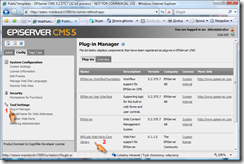Get out of my way! … or the story of file metadata for VirtualPathProvider in EPiServer
March 17th, 2009 by Adam Najmanowicz | 27 CommentsImmediately after you implement the VirtualPathProvider proxy from my previous post you will notice a one fairly serious lack in it. Namely all the files within that provider will be hiding behind the registration form. That is not cool for a couple of reasons?
- You may want to keep all of the files in one store ? being forced to put them into a designated folder is not desired.
- You may want to make some file freely available for some time and lock it after a while, or the other way around (e.g. to allow the robots to crawl it initially). having to move them is just silly and defeats the purpose.
So how do you discriminate the files that you want locked from those that you want to be publically available, and potentially from those that you want only the logged in users to be able to get?
Specifying the EPiServer File Metadata sweetness
One of the potential solutions would be to define a special rights group and check for that group for the people that have your ?registered? magic-cookie. That however introduces a bogus group, and I would rather like to avoid that. However if you look into the FileSummary.config file that?s located in your web application folder you will find a slightly mysterious content. A bit of hacking reveals that you can actually add your own metadata to the file. For example adding the access rights based on what I?ve established above would look as follows (the content you can already find in the file that comes with the public templates that-we-all-oh-so-love is skipped):











